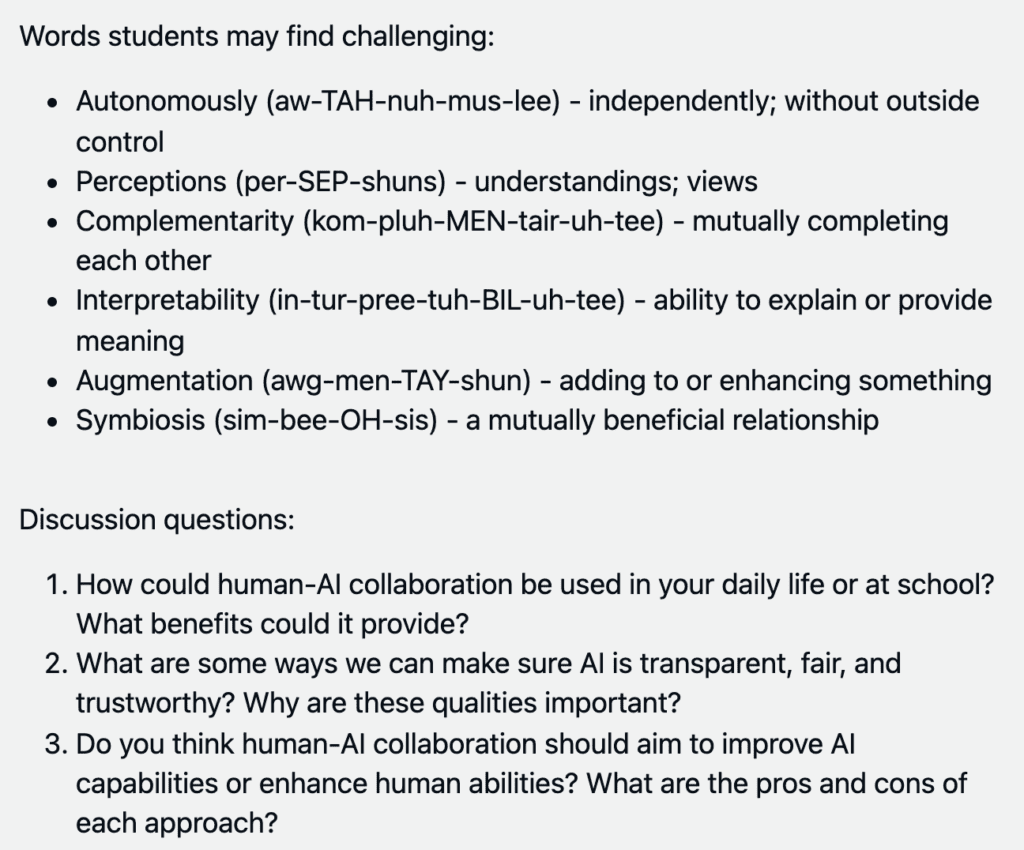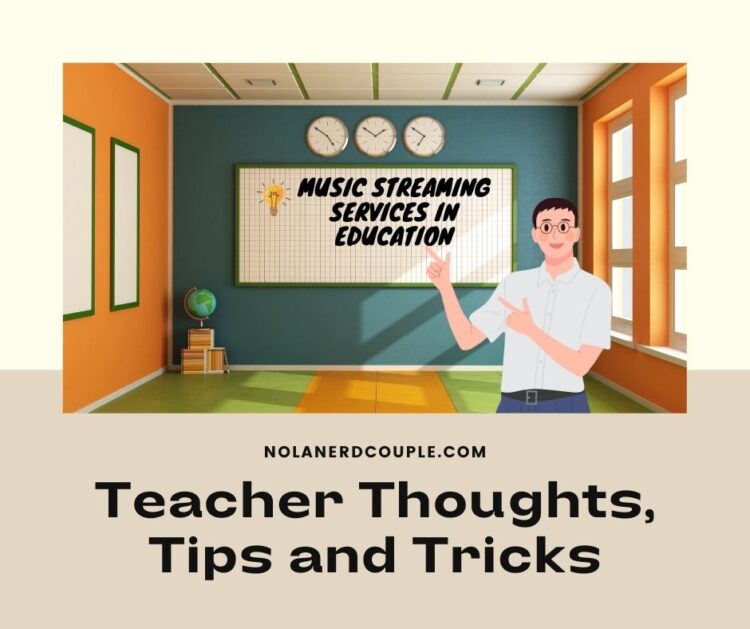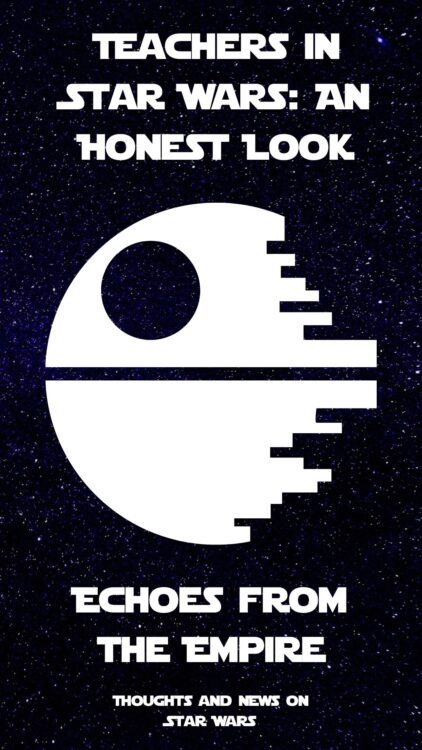Like many teachers, I always look for ways to work smarter, not harder. Lesson planning, creating materials, and grading can be highly time-consuming. When I first heard about AI assistants that can help with these tasks, I was intrigued but also cautious. There are valid concerns around AI, like cheating and plagiarism. However, I decided to experiment with using AI in my planning this summer to see if it could make my life easier. Here’s what I’ve learned in my experiment with AI as a teaching assistant so far.
The Pros: AI as a Teaching Assistant
Drafting Lesson Plans
I used to spend way too much time writing lesson plans. Now, the AI assistant can help me assemble a draft in minutes based on the learning objectives, topics, and activities I want to cover. This is especially true in my African American History class. I can feed it the objectives and the text of a primary source, which helps me structure a lesson plan. I can then review and tweak the AI’s work. For me, this is what takes the longest to do with AI. Its first attempt is never quite what you want, plus it often assumes you know what it is talking about. Getting quality work from an AI is genuinely an iterative and cooperative process. This gives me a strong starting point and framework for my lessons.
Developing Materials
Creating customized materials, whether close reading passages or essay prompts, is time-consuming. I can always search on Teacher Pay Teachers. Still, except for one product I have purchased from that website, I’m always disappointed. I spend an inordinate amount of time getting it to be what my students need for that day’s lesson. But now I can give the AI a topic and specifications, and it generates these materials. Again, if you do it once and again, you aren’t going to get high quality. It has to be an iterative process.
Questioning and Close Reading
If I were to convince any teacher to use AI, I would show them how I use this feature. One of the challenges with Computer Science is finding articles for my students to read that are NOT geared toward other computer scientists. Meaning my students don’t have the background knowledge to understand the material.
One of the great things about Claude2 or GPT4 is that you can copy and paste text (Claude allows for longer texts than GPT4) and ask it to be rewritten at a lower reading level. Both platforms do a remarkable job of doing this. I then often ask it to list difficult words and jargon and have it give a definition and a pronunciation guide. I can then create a Google doc where I copy and paste the new text, provide proper attribution to the original piece, and create footnotes for the difficult words.

For teachers, the biggest chatbot is the speed at which it can develop questions. I have done this with some of my slides. I feed it the notes and ask it to build check-for-understanding and open-ended questions. It is way better than I am at this. I love this feature. This is what I spend most of my time doing with AI.
The Cons: Addressing the Challenges
Every worry teachers have about AI is valid. They exist. Cheating and plagiarism are real issues; AI content sometimes includes inaccuracies or problematic biases. As teachers, we have to be vigilant about monitoring how students utilize AI. Clear policies and lessons on ethical use are so important. I also recognize the limitations of AI. While it can provide helpful assistance, nothing can replace human nuance, relationships, and wisdom in teaching. For it to benefit students, they will have to be taught how to engineer prompts. I don’t think most teachers are ready, nor do they have time for that. Most teachers are overextended anyway.
Only the most ambitious students will undergo the iterative process to produce quality work. I’m also betting they won’t realize that what the AI creates will not have their voice.
For creative endeavors, I have not been impressed at all. I had it write a story about Robert Smith and Paul Westerberg meeting for the first time at a festival. The story was beyond trite. It was actually worse than anything a student has turned in to me.
So Where Does that Leave Us
Nothing a student does is cheat-proof unless the teacher watches them like a hawk during the whole process. I also teach Computer Science, so I have long believed that if I give homework, the chances are high that students will cheat. It’s code, so I can’t see the handwriting. Plus, there are only so many ways to solve the coding problems high school students can solve. Every solution is on the Internet, as I have found out the hard way over the years.
I asked my students to write about the code to see if they knew what they turned in. Now, I have to worry about AI doing this for them. I see a lot more one-on-one or small-group conferences in the future.
AI will be a significant disrupter in education. I don’t blame teachers for wanting to shun and block AI in education. As others have written, AI will shift how we approach things. For teachers, this makes them highly uncomfortable. Especially after COVID-19, and locally for us, Hurricane Ida, teachers don’t want anything new to learn on the fly. Engineering quality prompts for AI are complex and have a significant learning curve. Documentation for most AI tools is scarce.
I empathize with teachers who are fearful of AI in education. I believe we are entering an era where things are no longer how they used to be. For some, this can be yet another push toward the teacher exodus.
Yet AI won’t go away. Blocking it will not help teachers learn it, and students are the best at circumventing any attempts to stop it.
I don’t have any easy answers, but I decided to stop worrying and learned to love the incoming storm.
Looking Ahead
While AI teaching assistants are no magic bullet, they have alleviated some of my routine burdens as an educator. I plan to continue leveraging AI responsibly to enhance, not replace, my role. With careful oversight, AI can have a net positive impact in my classroom. I’m excited to see how this technology evolves in step with educational needs while prioritizing student learning ethically.
About The Author
Discover more from NolaNerdCouple.com
Subscribe to get the latest posts sent to your email.




